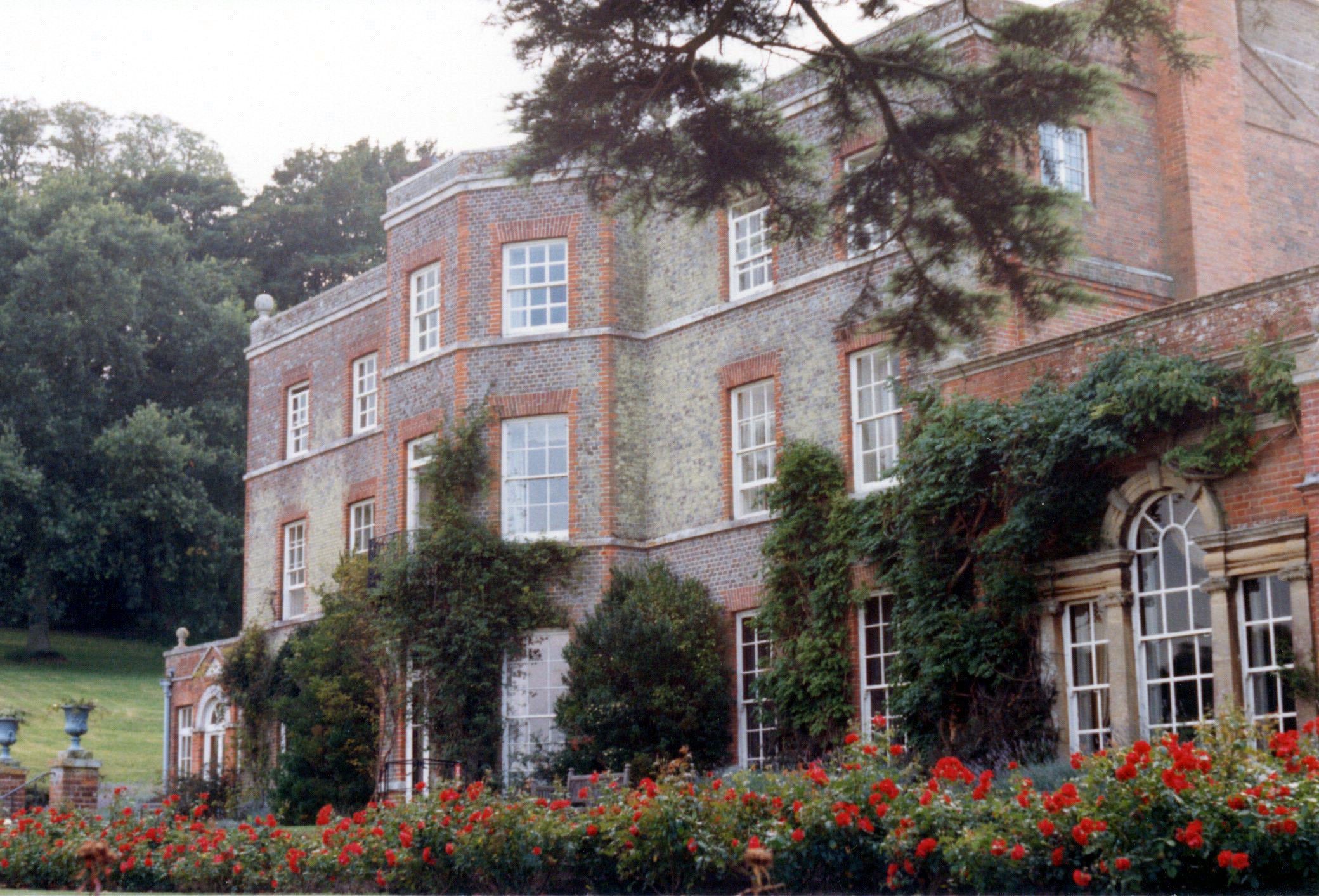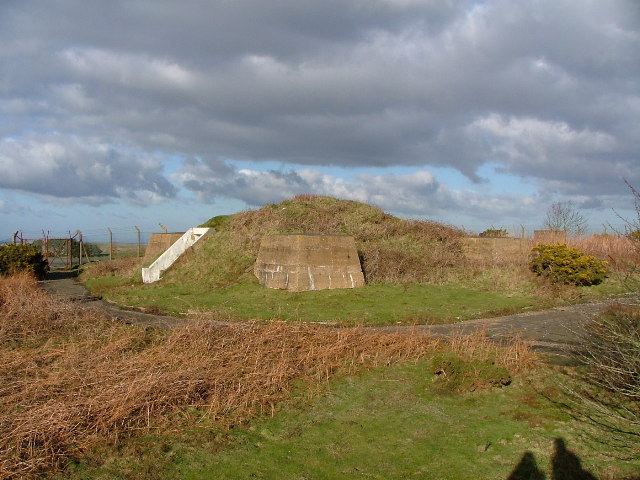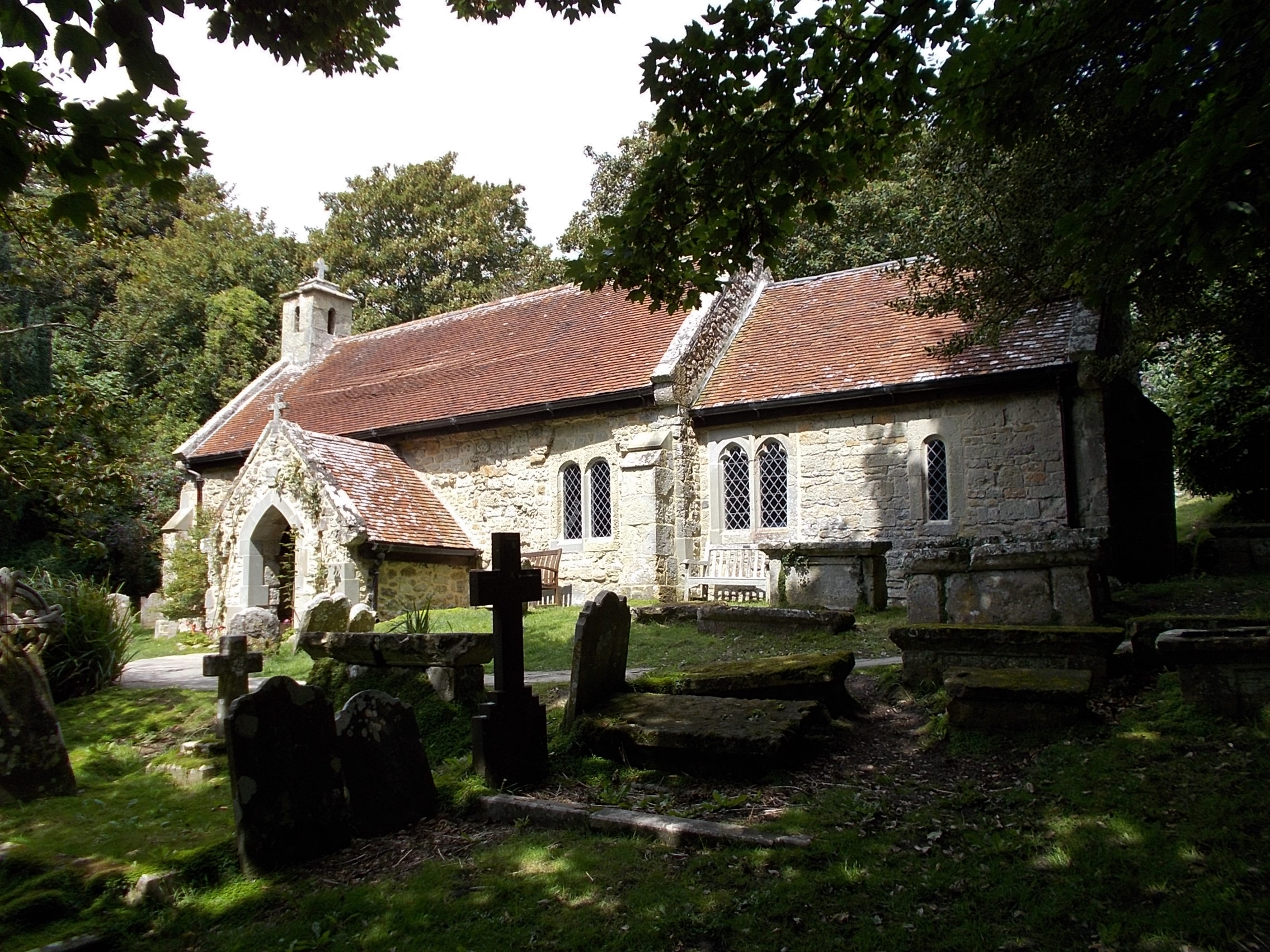|
French Invasion Of The Isle Of Wight
The French invasion of the Isle of Wight occurred during the Italian Wars in July 1545. The invasion was repulsed. France had a long history of attacking the Isle of Wight, and the 1545 campaign proved to be the last time to date that the French have attempted to take it. Although the French forces, led by Claude d'Annebault, greatly outnumbered those of the English, the battles fought (including the battles of the Solent and Bonchurch) ended without a clear winner. However, as the French were repelled, it could be considered an English victory. Although the operation was inconclusive, the English suffered heavily, including the loss of the carrack ''Mary Rose'' in the Battle of the Solent. Details of the conflict have not been very well recorded, and some accounts claim that the French were defeated at each battle rather easily. French strategy was to effect a landing at Whitecliff Bay and cross Bembridge Down to attack Sandown, and another landing at Bonchurch with a ... [...More Info...] [...Related Items...] OR: [Wikipedia] [Google] [Baidu] |
Italian War Of 1542–1546
The Italian War of 1542–1546 was a conflict late in the Italian Wars, pitting Francis I of France and Suleiman I of the Ottoman Empire against the Holy Roman Emperor Charles V and Henry VIII of England. The course of the war saw extensive fighting in Italy, France, and the Low Countries, as well as attempted invasions of Spain and England. The conflict was inconclusive and ruinously expensive for the major participants. The war arose from the failure of the Truce of Nice, which ended the Italian War of 1536–1538, to resolve the long-standing conflict between Charles and Francis—particularly their conflicting claims to the Duchy of Milan. Having found a suitable pretext, Francis once again declared war against his perpetual enemy in 1542. Fighting began at once throughout the Low Countries; the following year saw the Franco-Ottoman alliance's attack on Nice, as well as a series of maneuvers in northern Italy which culminated in the bloody Battle of Ceresole. Charles ... [...More Info...] [...Related Items...] OR: [Wikipedia] [Google] [Baidu] |
John Murray (publishing House)
John Murray is a British publisher, known for the authors it has published in its long history including, Jane Austen, Sir Arthur Conan Doyle, Lord Byron, Charles Lyell, Johann Wolfgang von Goethe, Herman Melville, Edward Whymper, Thomas Malthus, David Ricardo, and Charles Darwin. Since 2004, it has been owned by conglomerate Lagardère under the Hachette UK brand. Business publisher Nicholas Brealey became an imprint of John Murray in 2015. History The business was founded in London in 1768 by John Murray (1737–1793), an Edinburgh-born Royal Marines officer, who built up a list of authors including Isaac D'Israeli and published the ''English Review''. John Murray the elder was one of the founding sponsors of the London evening newspaper ''The Star'' in 1788. He was succeeded by his son John Murray II, who made the publishing house important and influential. He was a friend of many leading writers of the day and launched the '' Quarterly Review'' in 1809. He was the ... [...More Info...] [...Related Items...] OR: [Wikipedia] [Google] [Baidu] |
John Oglander
Sir John Oglander (12 May 1585 – 28 November 1655) was an English politician who sat in the House of Commons from 1625 to 1629. He is now remembered as a diarist. Life Oglander was born at Nunwell House on the Isle of Wight, the son of William Oglander of West Dean, Sussex. He matriculated at Balliol College, Oxford on 8 July 1603, aged 18 and was a student of Middle Temple in 1604. He was knighted on 22 December 1615. In 1620, he was appointed deputy-governor of Portsmouth by William Herbert, 3rd Earl of Pembroke. He resigned in 1624 when he was made Deputy Governor of the Isle of Wight.John Debrett, William Courthope''Debrett's Baronetage of England: with alphabetical lists of such baronetcies''/ref> In 1625, Oglander was elected member of parliament for Yarmouth (Isle of Wight). He was re-elected MP for Yarmouth in 1626 and 1628 and sat until 1629 when Charles I decided to rule without parliament for eleven years. During the king's personal rule Oglander was a fi ... [...More Info...] [...Related Items...] OR: [Wikipedia] [Google] [Baidu] |
Piero Strozzi
Piero (or Pietro) Strozzi (c. 1510 – 21 June 1558) was an Italian military leader. He was a member of the rich Florentine family of the Strozzi. Biography left, Portrait of Piero Strozzi Born in Florence, Piero Strozzi was the son of Filippo Strozzi the Younger and Clarice de' Medici. Although in 1539 he married another Medici, Laudomia di Pierfrancesco, he was a fierce opponent of the main line of that family. He fought in the army led by his father and other Florentine exiles from France to oust the Medici from Florence, but, after their defeat at the Battle of Montemurlo, Piero fled to France at the court of Catherine de' Medici. He was in French service during the Italian War of 1542. Having raised an army of Italian mercenaries, he was confronted by the Imperial-Spanish forces at the Battle of Serravalle, where he was defeated. In 1548 he was in Scotland supporting Mary of Guise of behalf of Henry II of France, during the war of the Rough Wooing. There he desi ... [...More Info...] [...Related Items...] OR: [Wikipedia] [Google] [Baidu] |
Attack On The Isle Of Wight
Attack may refer to: Warfare and combat * Offensive (military) * Charge (warfare) * Attack (fencing) * Strike (attack) * Attack (computing) * Attack aircraft Books and publishing * ''The Attack'' (novel), a book * '' Attack No. 1'', comic and animation * Attack! Books, a publisher * ''Attack!'' (publication), a tabloid publication of the National Alliance established in 1969. The name was changed to '' National Vanguard'' in 1978 * ''Der Angriff'', a.k.a. ''The Attack'', a newspaper franchise * In newspaper headlines, to save space, sometimes " criticise" Films and television * Attack! The Battle of New Britain a 1944 American armed forces documentary film * ''Attack'' (1956 film), also known as ''Attack!'', a 1956 American war film * ''Attack'' (2016 film), a 2016 Telugu film * ''Attack'' (2022 film), a 2022 Hindi film * ''The Attack'' (1966 film), an Australian television play * ''The Attack'' (2012 film), a 2012 film directed by Ziad Doueiri * "The Attack" ('' ... [...More Info...] [...Related Items...] OR: [Wikipedia] [Google] [Baidu] |
Farnham, Surrey
Farnham ( /ˈfɑːnəm/) is a market town and civil parish in Surrey, England, around southwest of London. It is in the Borough of Waverley, close to the county border with Hampshire. The town is on the north branch of the River Wey, a tributary of the Thames, and is at the western end of the North Downs. The civil parish, which includes the villages of Badshot Lea, Hale and Wrecclesham, covers and had a population of 39,488 in 2011. Among the prehistoric artefacts from the area is a woolly mammoth tusk, excavated in Badshot Lea at the start of the 21st century. The earliest evidence of human activity is from the Neolithic and, during the Roman period, tile making took place close to the town centre. The name "Farnham" is of Saxon origin and is generally agreed to mean "meadow where ferns grow". From at least 803, the settlement was under the control of the Bishops of Winchester and the castle was built as a residence for Bishop Henry de Blois in 1138. Henry VIII is thou ... [...More Info...] [...Related Items...] OR: [Wikipedia] [Google] [Baidu] |
Charles Wriothesley
Charles Wriothesley ( ''REYE-əths-lee''; 8 May 1508 – 25 January 1562) was a long-serving officer of arms at the College of Arms in London. He was the last member of a dynasty of heralds that started with his grandfather—Garter Principal King of Arms John Writhe. Personal life Charles Wriothesley was a younger son of Thomas Wriothesley, who also became Garter King of Arms, and his wife, Jane Hall. His uncle, William Wriothesley, had also served at the College of Arms as York Herald. Charles Wriothesley was born in London on 8 May 1508. In 1511, he moved with his family into Garter House, which his father had built as an embodiment of the family's rise to fame. His father sent him to Cambridge to study law. He was being educated at Trinity Hall, Cambridge by 1522.See . He has no entry in ''Alumni Cantabrigienses''. He seems to have married twice. His first wife was the daughter of a Mr Mallory. When he died at his lodgings London on 25 January 1562, however, there was no men ... [...More Info...] [...Related Items...] OR: [Wikipedia] [Google] [Baidu] |
St Boniface Down
St Boniface Down is a chalk down near Ventnor, on the Isle of Wight, England. Its summit, , is the highest point on the island, with views stretching from Beachy Head to the east, Portsmouth to the north and the Isle of Portland to the west. It is north of the town. There is reputed to be a wishing well on its southern slope, which requires the wisher to climb up from the south without looking back. In 1545, a French invasion force attempted this against a force of the Isle of Wight Militia commanded by Sir John Fyssher – which allegedly included several women archers- and were routed. In 1940, the radar station was bombed by Ju 87 Stuka dive bombers, which is reconstructed in the film " The Battle of Britain". The top is surmounted by a round barrow. At the eastern foot of the down, on the A3055 road between Bonchurch and Luccombe, a path descends into Bonchurch Landslips via a scenic rock cleft, the Devil's Chimney. Wildlife St Boniface Down is home to the largest ... [...More Info...] [...Related Items...] OR: [Wikipedia] [Google] [Baidu] |
Sandown Castle, Isle Of Wight
Sandown Castle was a Device Fort built at Sandown on the Isle of Wight by Henry VIII in 1545 to protect against the threat of French attack. Constructed from stone with angular bastions, its design was a hybrid of Italian military architectural thinking with traditional English military design. The site was raided by a French force that summer while the fortification was still being constructed. The site suffered from coastal erosion and the castle was demolished in 1631. History 16th century Background Sandown Castle was built as a consequence of international tensions between England, France and the Holy Roman Empire in the final years of the reign of King Henry VIII. Traditionally the Crown had left coastal defences to the local lords and communities, only taking a small role in building and maintaining fortifications, and while France and the Empire remained in conflict with one another, maritime raids were common but an actual invasion of England seemed unlikely. Modes ... [...More Info...] [...Related Items...] OR: [Wikipedia] [Google] [Baidu] |
Bonchurch
Bonchurch is a small village to the east of Ventnor, now largely connected to the latter by suburban development, on the southern part of the Isle of Wight, England. One of the oldest settlements on the Isle of Wight, it is situated on The Undercliff adjacent to the Bonchurch Landslips (or "The Landslip") Site of Special Scientific Interest. The main village is backed by a cliff to the north, with the Upper Bonchurch section on the clifftop halfway up St Boniface Down on the main A3055 road. Geography Bonchurch is situated on a stable section of former landslip, its main street (Bonchurch Village Road) running east–west in a valley sheltered to the north by cliffs, and to the south by The Mount, a ridge of slipped rock. Bonchurch Village Road has an adjacent landscaped pond, fed by a spring, on the site of former withy beds. The Shanklin-Ventnor route originally passed through Bonchurch, descending the cliff by the steep Bonchurch Shute; now it is bypassed by the clifftop A3 ... [...More Info...] [...Related Items...] OR: [Wikipedia] [Google] [Baidu] |
Sandown
Sandown is a seaside resort and civil parish on the south-east coast of the Isle of Wight, United Kingdom with the resort of Shanklin to the south and the settlement of Lake in between. Together with Shanklin, Sandown forms a built-up area of 21,374 inhabitants. The northernmost town of Sandown Bay, Sandown has an easily accessible, sandy shoreline with beaches that run continuously from the cliffs at Battery Gardens in the south to Yaverland in the north. Geography The town grew as a Victorian resort surrounded by a wealth of natural features. The coastal and inland areas of Sandown are part of the Isle of Wight Biosphere Reserve designated by UNESCO's Man and the Biosphere Programme in June 2019, and Sandown's sea front and clifftops form part of the Isle of Wight Coastal Path. The Bay that gives Sandown its name is an excellent example of a concordant coastline with five miles of well-developed tidal beaches stretching all the way from Shanklin to Culver Down ... [...More Info...] [...Related Items...] OR: [Wikipedia] [Google] [Baidu] |






